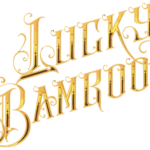Tattooing and marking of the body has been a mainstay in human culture for hundreds, if not thousands of years. Early on, in some parts of the world, these permanent markings were attributed to those deemed “lower class”, such as slaves and gladiators. However, other cultures, like the Norse and the Celts, warriors bore tattoos and body paint to intimidate their enemies in battle. The Thracian foot soldiers were also tattooed.
Some tattoos were ‘earned’ through triumph over one’s enemies. Some were earned by increasing your status (like rank). Some were earned through loss, however, which wasn’t always a good thing. Deserters, if not executed, were also marked, similarly to being marked as a criminal. Some would take their own lives instead of of living out their life “marked” as a traitor or a coward.
In the 1800’s, British sailors would often get tattoos on their travels as a remembrance of their experiences, a tradition that seems to have continued to this day. During that time in history, American sailors, out of fear of being hijacked to forcefully serve in the British Navy, would often have their information tattooed on their body as proof of nationality.
In the late 1900’s, many British officers and soldiers would have their regiment crest tattooed on their body, as a means of pride.
Today, tattoos and the military go hand in hand. Many have images of national pride, such as a flag or an emblem. In America, the EGA (Eagle, Globe and Anchor) is quite popular amongst Marines. One of the newer tattoos making it around the US military is the ;GY6 (I Got Your Six), which basically means I’m here for you.
Military tattoos are popular all around the world. There really isn’t any place that hasn’t been inspired by our early ancestors to continue this tradition.
